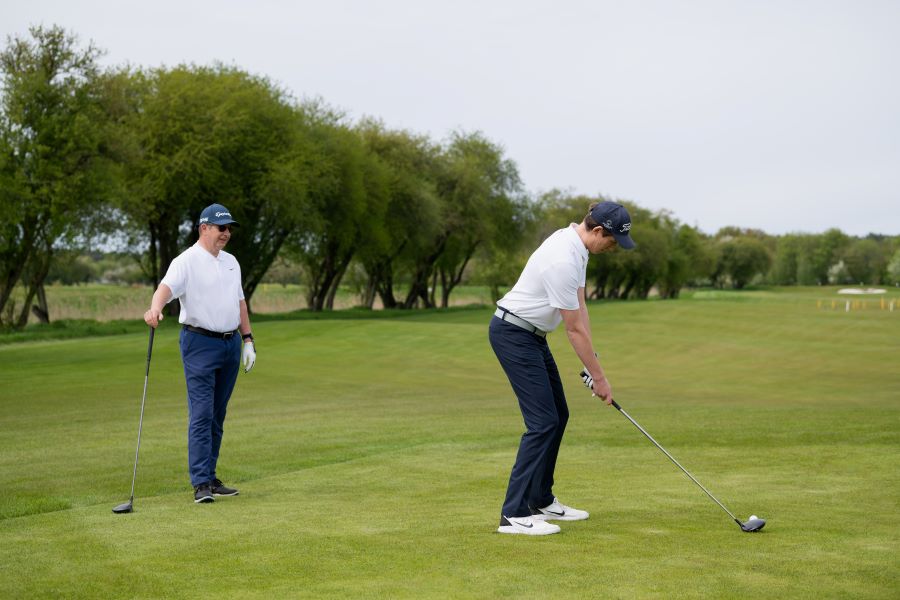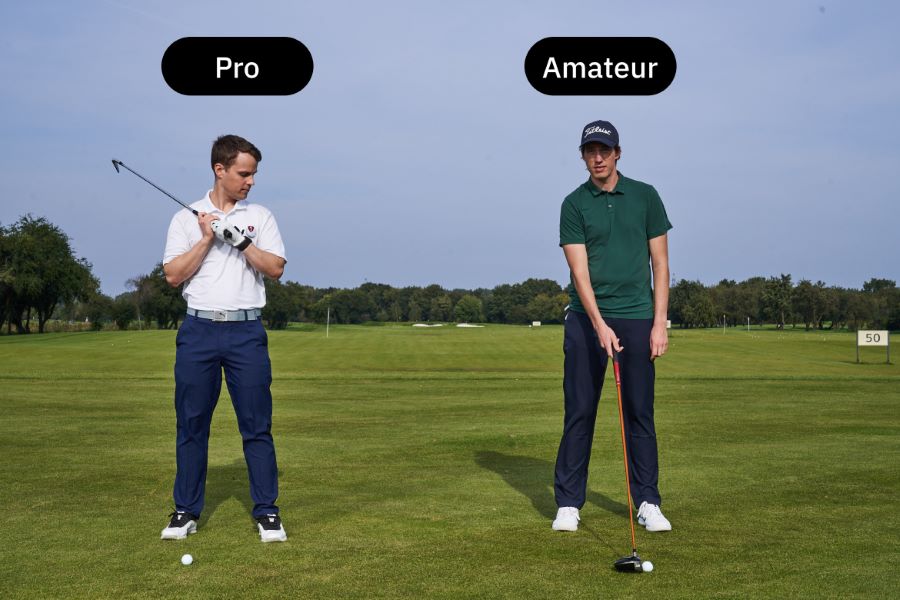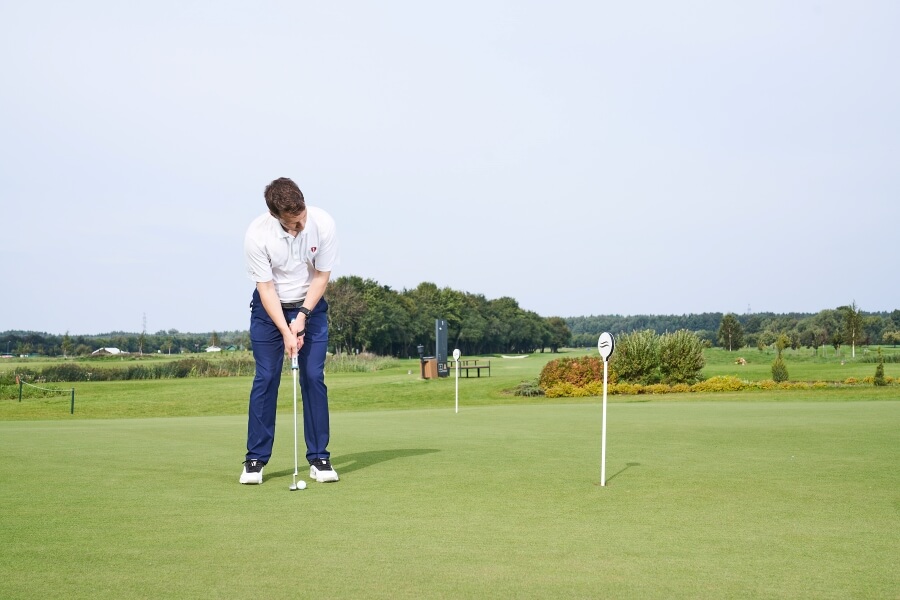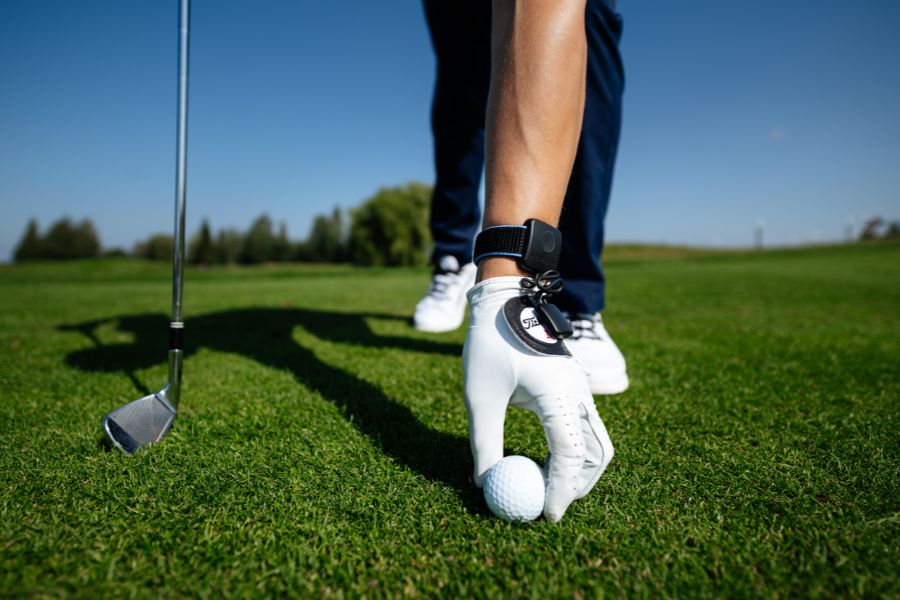16 Tips on How to Prepare for a Golf Tournament and Compete for Silverware
Golf tournaments are supposed to be fun. They give you a chance to test your skills, get your adrenaline going, and maybe even head home with a trophy.
However, all good things require a bit of work and time, and golf tournaments are no exception.
If you want to make the most of your next golf tournament, you must know how to prepare. I’ll show you the steps involved in preparing for a golf tournament. Get started today so you are ready when you need to tee it up on the course.
How to Prepare for a Golf Tournament (Key Takeaways)
If you don’t have time to read all of my best tips for playing in a golf tournament, bookmark it and come back later. However, here are a few key takeaways to understand right now.
- If you want to play well in a tournament, you have to physically and mentally prepare before the event starts.
- Have a strong understanding of what it takes to control your clubface and hit a straight shot; if something goes wrong on the course, you will be ready.
- Playing a practice round and getting familiar with the golf course will help you on the day of the event.
- Have a game plan in place, but understand that you will need to be flexible based on course conditions on the day of the event.
- Remember that golf tournaments are supposed to be enjoyable, but they do take practice and preparation if you want to play your best.
Contents
- How to Prepare for a Golf Tournament: 16 Essential Tips
- 1. Study the Course
- 2. Devise a Plan
- 3. Learn the Rules
- 4. Know How to Square the Clubface
- 5. Practice with a Purpose
- 6. Play a Practice Round
- 7. Improve Your Putting Stroke
- 8. Clean Your Golf Clubs
- 9. Prepare Your Equipment
- 10. Eat a Balanced Diet
- 11. Sleep Early Before a Tournament
- 12. Arrive Early
- 13. Warm Up
- 14. Keep Hydrated
- 15. Remember Your Pre-Shot Routine
- 16. Take a Caddie
How to Prepare for a Golf Tournament: 16 Essential Tips
1. Study the Course
Before preparing for a golf tournament, you must know what you are dealing with.
That is why top professionals often miss the competition preceding a Major to get an extra week of practice at the venue.
Studying the course in detail before a tournament helps you understand what equipment is best suited and how you should play it.

2. Devise a Plan
Once you have studied the course, think about your game plan and goals for the round. How you play each hole, what club you will take, and what equipment you require.
You can use lower-launching long irons over hybrids or higher-lofted fairway woods if competing on a links golf course.
Alternatively, the higher-launching golf clubs are a better choice on Parkland courses with smaller greens demanding a quick stop.
During this time, reflect on your strengths and weaknesses to help you identify what to work on at the driving range and with your golf coach.
3. Learn the Rules
Everyone believes they know the rules of golf until one of their opponents enforces an arbitrary ruling, like standing astride.
Having a detailed understanding of the legalities of the game helps avoid sticky situations and take advantage of other scenarios.
It gives you a leg up on the field at an amateur level.
Adding to the rules, I recommend fully educating yourself on the details of the tournament format.
If you are playing in a Stableford, you might approach this round differently than Strokeplay medal.
For example, you can pick up your ball on bad holes, and the scoring is different in this format.
4. Know How to Square the Clubface
To hit a golf ball straight, you have to make contact with a square clubface. The wrists control the clubface.
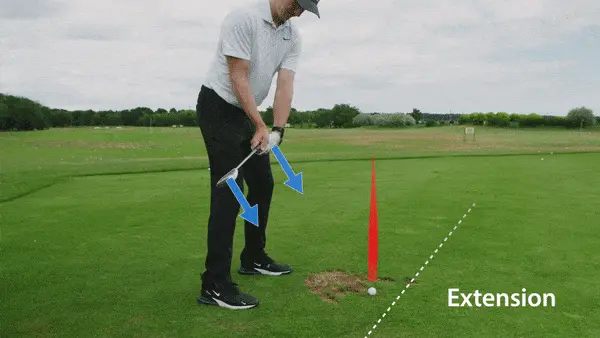
When you get to your tournament day, you will be nervous, and swinging the club can feel different and even a bit foreign. Therefore, you must understand the mechanics of the swing and how to square the clubface.
If you start hitting the ball left or right, knowing what it takes to get you back to square will make all the difference.
The most common mistake amateur golfers make is creating too much extension in the lead wrist throughout their golf swing. This extra extension opens the clubface and makes it harder to hit a straight shot.
Instead, use HackMotion to learn ways to flatten the lead wrist and get your clubface square. In the weeks leading up to your event, use HackMotion on the range to collect data, analyze it, and get more confident about your ability to hit a straight golf shot under pressure.
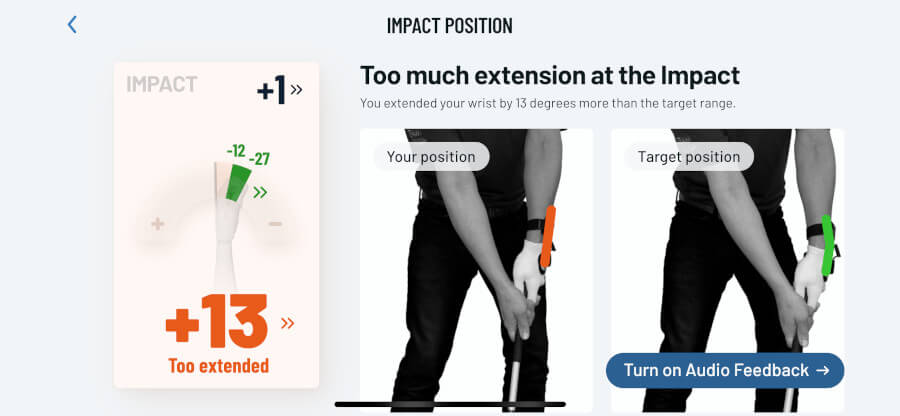
5. Practice with a Purpose
Avoid over-practicing before the tournament, and focus on the core parts of your game.
In this article, PGA professional Jordan Spieth discusses his warm-up routine and top tips for how to practice before a tournament.
Here are my 4 tips for practicing the day before a big golf tournament:
- Keep it light: Avoid overexertion and stick to light practice such as putting and chipping. Steer clear of wearing yourself out by hitting 1000 balls at the range. Also, simpler is better, do not get technical, and try not to change your swing technique.
- Focus on your strengths: Spend more time practicing your quality areas, such as your short game or driving. This will give you confidence going into the tournament. Do not neglect your weaknesses, but work your game around what you have rather than what you do not have.
- Practice escape shots: Your round will not always run according to plan, and you must prepare for the worst. When on the range, practice left-bladed strikes or one-handed backward shots to assimilate being stuck against a tree trunk.
- Simulate tournament conditions: Try to practice under similar conditions to those expected in the tournament. If not on the actual tournament course, find a similar one to play on. If possible, try to play in similar weather conditions.
6. Play a Practice Round
When time allows, it is recommendable to play a practice round a couple of days out from the tournament.
It lets you test your game plan and put your training on the range into action.
It proves impactful for approach and short-game shots because you can analyze the undulations of the greens.
This improves your tournament planning, as you can use the slopes to your advantage on approach to avoid leaving tricky putts.

7. Improve Your Putting Stroke
We drive for show but putt for dough, right?
Well, not exactly, but a solid putting stroke improves your scrambling record and prevents you from leaking unnecessary strokes.
Legendary golfer Tiger Woods would focus a significant amount of time on the putting green ahead of a tournament round.
Here is my recommended warm-up routine for putting before a round of golf in a tournament:
- Short Putts: Start with a series of short putts, focusing on the speed and line of your stroke.
- Long Putts: Gradually move to longer putts, working on your distance control and getting a feel for the speed and break of the greens.
- Breaking Putts: Practice putting on breaking putts, working on your ability to read the greens and adjust your stroke accordingly.
- Speed Control: Focus on controlling your putting speed. Make sure you are hitting putts with the correct pace and avoiding three-putts.
- Visualization: Use visualization to see yourself making putts and sinking vital shots on the course.
This warm-up routine should take about 15-20 minutes and will help you get physically and mentally prepared for your round. By focusing on your putting, you can set yourself up for success on the greens and avoid those frustrating three-putts.
In addition, make sure to wear your HackMotion when practicing your putting. HackMotion will give you data about your stroke consistency so you can look for red flags.
There is always a slight variation from one stroke to another. Still, after analyzing more than 1,000,000 golf swings, we know that the professionals are the most consistent in maintaining wrist angles throughout their game.
8. Clean Your Golf Clubs
It takes a few minutes to clean your clubs and eliminates debris between the grooves to maximize friction, spin, and ball speed.
While cleaning, inspect the state of your shafts, grips, and clubheads to see if any part needs replacing.
9. Prepare Your Equipment
I am sure you have had that feeling of arriving at the 1st tee having forgotten something from your golf bag.
The last thing you need is to get to the first tee and realize you have forgotten your tees, gloves, or even your driver!
If you take the time to prepare your equipment well in advance of the tournament, you can avoid this situation.
My tip is to double-check that your clubs and balls are in good condition and suitable for the course.
Pack everything you need, including extra clothing, snacks, and rain gear. Also, do not forget to charge your rangefinders, GPS watches, or electric golf carts.
Lastly, I suggest marking your golf ball with your initials or a symbol you can effortlessly identify.
The last thing you need in a tournament is to play the incorrect ball and earn a two-stroke penalty.
10. Eat a Balanced Diet
Eating a balanced and nutritious diet is necessary to maintain energy levels for 18 holes.
Divide your protein intake, minerals, vitamins, and carbohydrates to optimize your performance.
Another recommendation is to avoid eating a large meal before your round.
This reduces the risk of stomach cramps or side stitches. However, it is worth carrying healthy snacks like nuts, raisins, and bananas on the course for bursts of energy.
11. Sleep Early Before a Tournament
Ensure you are well-rested before the tournament to perform at your best.
A peaceful sleep before a big golf tournament is vitally important.
Not only does it help to feel physically prepared, but you will also feel more mentally prepared.
Sleep plays a significant role in improving energy levels and concentration.
Getting enough sleep can also reduce stress and anxiety, enhance mood, and improve mental clarity and decision-making.

12. Arrive Early
Are you one of those golfers always running late for your tee time?
Allowing enough time for travel, practice, and rest before the competition significantly improves your chances of performing at your best in a tournament.
Arriving early on the morning of a big golf tournament will help you feel well-prepared for the game. You will have time to warm up, practice, and mentally prepare before your tee time.
In addition, arriving beforehand can help players avoid delays, such as traffic or parking issues, which can disrupt their focus and performance.
Overall, arriving in advance is essential to your preparation and helps you perform at your best during the tournament. Set your alarm and get to the course early.
13. Warm Up
Taking the time to properly warm up before a golf tournament is recommended.
Getting prepared physically is crucial and translates to success on the course.
Here is my recommended warm-up routine for the morning of a golf tournament:
- Dynamic Stretching: Start with a few dynamic stretches to warm up the muscles and improve flexibility. Avoid wearing yourself out and get the blood flowing smoothly.
- Hitting Balls: Hit a few balls on the range to get a feel for your swing and work on your shot-making. Avoid overdoing it and only loosen up.
- Chipping: Spend some time chipping and pitching, working on your short game, and getting a feel for the shots you will need to make around the greens.
This warm-up routine should take about 30 minutes and will help you get prepared physically and mentally for your round.
By warming up and preparing in advance, you can set yourself up for success on the golf course.
14. Keep Hydrated
You might not like this but try to avoid coffee and alcohol before playing, as it can dehydrate the body. Drink plenty of water to stay hydrated during the tournament.
Golf experts recommend drinking about one-liter water bottle every 9 holes. This can vary based on temperature, humidity, and physical activity level.
We often overlook this factor, but staying hydrated is necessary during a round of golf to maintain peak physical and mental performance and avoid heat exhaustion or dehydration.
15. Remember Your Pre-Shot Routine
Amateurs often forget to include a pre-shot routine in their rounds, much to their detriment.
Repeating the same procedure before each shot brings consistency to your golf game and helps you focus and double-check that your alignment, ball position, and swing are on point.
Employing a pre-shot routine also helps you put the last shot behind you and transition to your next swing.
It also gives you a moment to clear your head and forget about poor results on the hole before.
16. Take a Caddie
The astute knowledge of a local caddie is invaluable in a tournament, especially when you are playing on an unfamiliar course.
Having them by your side helps you make better-informed club selection choices and pick better lines.
You will also enjoy an advantage on the greens over your competitors as the local caddies guide your ball to more favorable positions.
Finally, the experienced eye of a caddie helps you find your ball faster and reduces the lost count for the round.
Final Thoughts
Learn the ins and outs of the host course before drawing up your strategy and arming yourself with the correct equipment.
Next, get your practice in, and prepare for all conditions before resting, fueling your body, and preparing to execute.





